
Since this is the final story of Season 2, I decided to have a little fun and focus on blood-sucking creatures from our nightmares. Now, you might be asking, didn’t you highlight a bunch of organisms that feed on blood two weeks ago? Indeed, I mentioned fleas, lice, ticks, and leeches. However, those all had one important thing in common that differentiates them with the animals we’ll be talking about today: they are all invertebrates. This week, we’ll look at a few vertebrate vampires.
As you might imagine, being a blood-feeding parasite can be difficult for larger animals. The invertebrates mentioned before are all small and somewhat innocuous, so the host may not even notice their presence for some time. However, a larger organism must either feed when the host is asleep or select a host that is unable to shake it off or harm it. Furthermore, a blood diet can be problematic in other ways. The high levels of ingested liquid can potentially overwhelm the kidneys and bladder and the hemoglobin in blood can cause iron poisoning (the iron in blood is what helps bind and transport oxygen). Because of these issues, the number of ‘vampiric’ vertebrates pales in comparison to the invertebrates that use the strategy. However, the few species that do have developed some unique behaviors and physiology to aid their efforts.
When I say vampire animal, the first thought of most people is the vampire bat. In actuality, the vampire bat is not a species, but a trio of related bat species. All of them are native to the Americas from Mexico through much of South America, with the exception of the Andes or exceptionally colder latitudes. The individual below is a common vampire bat, Desmodus rotundus. Vampire bats feed on the blood of mammals and birds with preferences varying between the three different species.
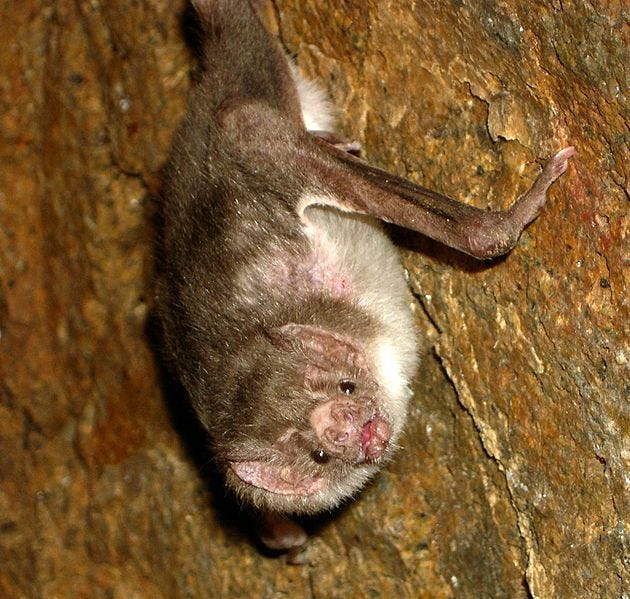
Like the majority of bats, vampire bats are primarily nocturnal. This means that they can feed when their hosts are resting or asleep. They have highly developed and sharp incisor and canine teeth, pictured below, for puncturing skin. It can even use its teeth like a barber to remove hair from the area it intends to bite. Its saliva contains anticoagulants, which inhibit blood clotting allowing it to flow. The vampire bat has also developed specialized digestion for processing its blood meals. The undigested blood plasma is quickly absorbed and passed through the kidneys and then excreted, often only a few minutes after feeding. This eases the physiological burden on the excretory system and allows the bat to quickly lighten itself to be able to fly away.
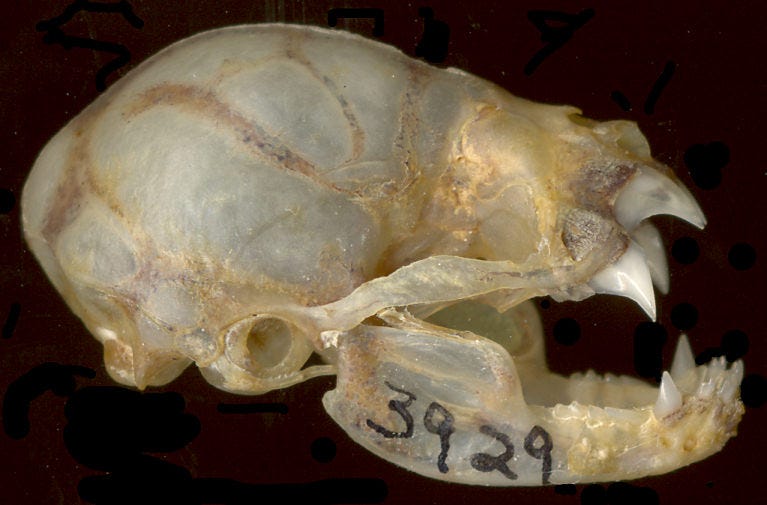
Of course, bats aren’t the only vampires. While I didn’t focus on them in my early story on the Galápagos, Darwin’s finches are renowned for showcasing specialized structures adapted for specific environments. It is among these 15 species of birds that we find our next bloodsucker. The vampire ground finch, Geospiza septentrionalis, is native only to Wolf and Darwin islands. While it does feed on nectar from flowers, it will also peck at the skin of other birds and feed on their blood. Oddly enough, the host birds do not resist this behavior. It is possible that this feeding method evolved from cleaning parasites off of other birds as a food source and so the host birds are accustomed to the pecking.
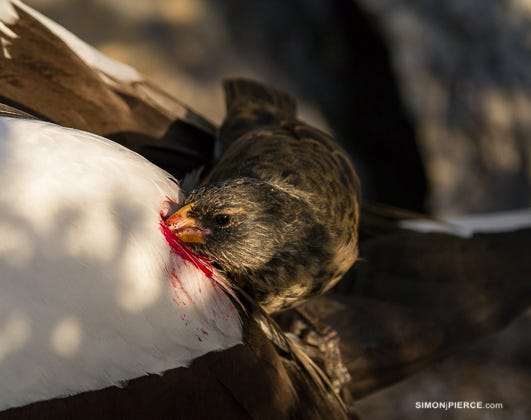
Much like leeches, lampreys have a reputation for being bloodsuckers, yet fewer than half of the 38 species of lamprey are actually parasitic. While they resemble eels, lampreys are actually a type of jawless fish. The parasitic species use their sucker-shaped mouth to attach themselves to larger fish and suck their blood. The sea lamprey, Petromyzon marinus, is an example of a parasitic lamprey species that has become an invasive pest, feeding on the native fish of the North American Great Lakes region.
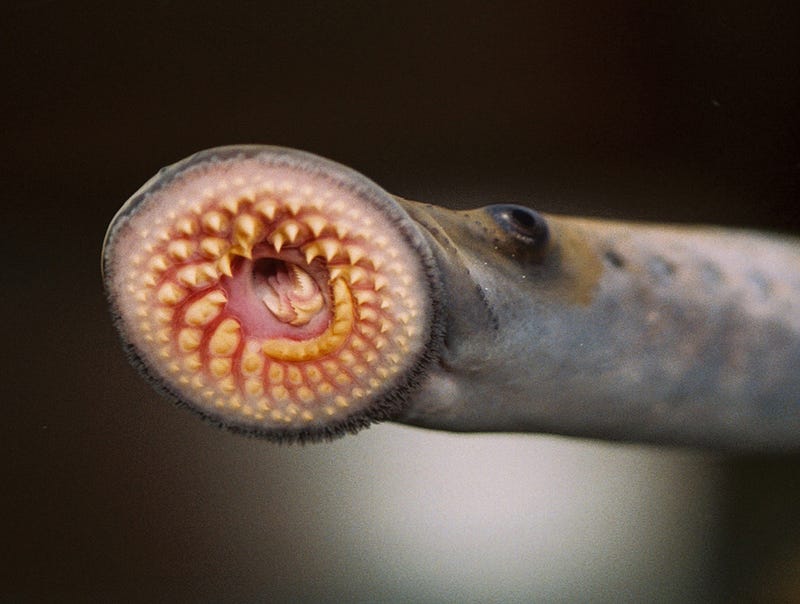
We will finish our discussion of vampires with an appropriate example: the candiru. The candiru, Vandellia cirrhosa, sometimes called the vampire catfish, is native to the Amazon and Orinoco river basins in South America and has truly become an object of folklore, akin to the bloodsucking monsters like the one in the top picture of this story. Lacking the sucker mouth of the jawless lamprey, the candiru buries its head in the gills of larger fish and attaches itself using spines on its gill covers.
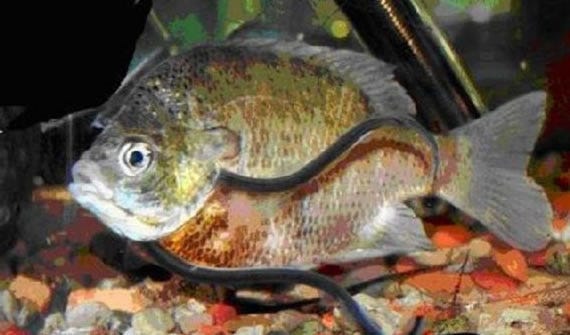
The one way in which these small fish exemplify the mythology and legend of the vampire even more than any other species is in the hysterical stories that have been passed down regarding their behavior towards humans. European scientists recorded native stories of the fish entering the human urethra as far back as the 1830s. I am personally an advocate for the use of local knowledge in furthering biology, but in this case it appears mistaken. There has only been one documented case in 1997 of a candiru removed from a urethra and the reported facts of that incident do not make sense when placed together, nor do they conform to known physics. For example, a fish could not possibly swim up a urine stream as was reported in that case because fluid physics dictates that the stream quickly breaks up into individual imperceptible droplets. The candiru also does not possess the physiological traits necessary to force open the urethra in order to enter it. However, the legend still persists. Much like Dracula, sometimes it is impossible to pass up such a juicy story, no matter how implausible.
I hope you enjoyed this somewhat carefree climax to the topic of parasitism as well as our entire journey through the world of symbiosis. As before, I will be taking a month-long break from writing stories. However, this does not mean that I won’t be working. That break gives me time to brainstorm a topic for Season 3 and to begin outlining the stories for it. If you have any ideas or requests, please feel free to share them.